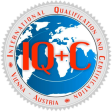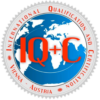ISO 21998:2020 Interpreting-Healthcare Interpreting-Requirements and Recommendations
ISO 21998:2020 is an international standard that specifies requirements and recommendations for healthcare interpreting services. This standard aims to ensure the quality, reliability, and professionalism of interpreting services provided in healthcare settings, which are critical for patient safety and effective communication between healthcare providers and patients.
Key Aspects of ISO 21998:2020
- Objective:
- To provide a framework that ensures high-quality healthcare interpreting services.
- Scope:
- Applicable to all individuals and organizations providing healthcare interpreting services, including freelance interpreters, interpreting agencies, and in-house interpreting teams within healthcare facilities.
- Benefits:
- Ensures consistent and high-quality interpreting services in healthcare settings.
- Enhances patient safety and satisfaction.
- Facilitates effective communication between healthcare providers and patients.
- Demonstrates adherence to internationally recognized standards.
- Promotes continuous improvement and professional development.
Requirements and Implementation
1. Competence and Qualifications:
- Interpreter Competence: Healthcare interpreters must have the necessary linguistic competence, medical terminology knowledge, and interpreting skills in both the source and target languages.
- Qualifications and Certification: Interpreters should possess relevant qualifications and certifications in healthcare interpreting. Continuous professional development and training are essential to maintain high standards.
2. Professional Practice:
- Code of Ethics: Interpreters should adhere to a professional code of ethics, which includes principles such as confidentiality, impartiality, accuracy, and integrity.
- Professional Conduct: Interpreters must maintain professional behavior, dress appropriately for the healthcare setting, and respect all parties involved.
3. Service Provision:
- Preparation: Interpreters should prepare adequately for assignments by familiarizing themselves with medical terminology, patient background information, and the specifics of the medical context.
- Accuracy and Completeness: Interpreters must ensure accurate and complete renditions of the spoken communication, with no omissions, additions, or alterations.
- Confidentiality: Interpreters must maintain the confidentiality of all patient information and medical records obtained during the interpreting assignment.
4. Client Relationship:
- Client Requirements: Clearly define and document client requirements and expectations for each healthcare interpreting assignment.
- Communication: Maintain clear and effective communication with healthcare providers, patients, and other stakeholders to ensure all requirements are understood and met.
- Feedback Mechanisms: Establish mechanisms for receiving and addressing client and patient feedback to improve future interpreting services.
5. Quality Assurance and Continuous Improvement:
- Monitoring and Evaluation: Regularly monitor and evaluate the quality of interpreting services through feedback from healthcare providers, patients, and other stakeholders.
- Continuous Improvement: Use feedback and evaluation results to make ongoing improvements to interpreting services.
- Professional Development: Encourage ongoing professional development and training to ensure interpreters stay current with relevant skills and knowledge.
6. Technical Resources:
- Equipment and Technology: Ensure interpreters have access to appropriate equipment and technology, such as telehealth platforms, audio systems, and other tools necessary for effective healthcare interpreting.
- Data Security: Implement robust data security measures to protect patient information and medical records related to interpreting assignments.
Certification Process
- Preparation:
- Understand the requirements of ISO 21998:2020 and assess the current processes and practices of your organization or individual practice.
- Gap Analysis:
- Conduct a gap analysis to identify areas that need improvement to meet the standard’s requirements.
- Implementation:
- Develop and implement procedures and practices that align with ISO 21998:2020. Ensure all interpreters and staff involved are trained and aware of these procedures.
- Internal Audit:
- Conduct internal audits to verify the effectiveness of the implemented processes and identify any areas needing improvement.
- Management Review:
- Perform regular management reviews to assess the suitability, adequacy, and effectiveness of the healthcare interpreting services.
- Certification Audit:
- Engage an accredited certification body to perform an external audit. The audit will be conducted in two stages:
- Stage 1: Review of documentation to ensure compliance with ISO 21998:2020.
- Stage 2: On-site audit to verify the implementation of processes and procedures.
- Engage an accredited certification body to perform an external audit. The audit will be conducted in two stages:
- Certification Decision:
- Based on the audit findings, the certification body will decide whether to grant ISO 21998:2020 certification.
- Surveillance Audits:
- Periodic surveillance audits are conducted to ensure ongoing compliance with ISO 21998:2020.
- Recertification:
- The certification is typically valid for three years, after which a recertification audit is required.
ISO 21998:2020 Interpreting-Healthcare Interpreting-Requirements and Recommendations
ISO 21998:2020 is an international standard that specifies requirements and recommendations for healthcare interpreting services. This standard aims to ensure the quality, reliability, and professionalism of interpreting services provided in healthcare settings, which are critical for patient safety and effective communication between healthcare providers and patients.
Key Aspects of ISO 21998:2020
- Objective:
- To provide a framework that ensures high-quality healthcare interpreting services.
- Scope:
- Applicable to all individuals and organizations providing healthcare interpreting services, including freelance interpreters, interpreting agencies, and in-house interpreting teams within healthcare facilities.
- Benefits:
- Ensures consistent and high-quality interpreting services in healthcare settings.
- Enhances patient safety and satisfaction.
- Facilitates effective communication between healthcare providers and patients.
- Demonstrates adherence to internationally recognized standards.
- Promotes continuous improvement and professional development.
Requirements and Implementation
1. Competence and Qualifications:
- Interpreter Competence: Healthcare interpreters must have the necessary linguistic competence, medical terminology knowledge, and interpreting skills in both the source and target languages.
- Qualifications and Certification: Interpreters should possess relevant qualifications and certifications in healthcare interpreting. Continuous professional development and training are essential to maintain high standards.
2. Professional Practice:
- Code of Ethics: Interpreters should adhere to a professional code of ethics, which includes principles such as confidentiality, impartiality, accuracy, and integrity.
- Professional Conduct: Interpreters must maintain professional behavior, dress appropriately for the healthcare setting, and respect all parties involved.
3. Service Provision:
- Preparation: Interpreters should prepare adequately for assignments by familiarizing themselves with medical terminology, patient background information, and the specifics of the medical context.
- Accuracy and Completeness: Interpreters must ensure accurate and complete renditions of the spoken communication, with no omissions, additions, or alterations.
- Confidentiality: Interpreters must maintain the confidentiality of all patient information and medical records obtained during the interpreting assignment.
4. Client Relationship:
- Client Requirements: Clearly define and document client requirements and expectations for each healthcare interpreting assignment.
- Communication: Maintain clear and effective communication with healthcare providers, patients, and other stakeholders to ensure all requirements are understood and met.
- Feedback Mechanisms: Establish mechanisms for receiving and addressing client and patient feedback to improve future interpreting services.
5. Quality Assurance and Continuous Improvement:
- Monitoring and Evaluation: Regularly monitor and evaluate the quality of interpreting services through feedback from healthcare providers, patients, and other stakeholders.
- Continuous Improvement: Use feedback and evaluation results to make ongoing improvements to interpreting services.
- Professional Development: Encourage ongoing professional development and training to ensure interpreters stay current with relevant skills and knowledge.
6. Technical Resources:
- Equipment and Technology: Ensure interpreters have access to appropriate equipment and technology, such as telehealth platforms, audio systems, and other tools necessary for effective healthcare interpreting.
- Data Security: Implement robust data security measures to protect patient information and medical records related to interpreting assignments.
Certification Process
- Preparation:
- Understand the requirements of ISO 21998:2020 and assess the current processes and practices of your organization or individual practice.
- Gap Analysis:
- Conduct a gap analysis to identify areas that need improvement to meet the standard’s requirements.
- Implementation:
- Develop and implement procedures and practices that align with ISO 21998:2020. Ensure all interpreters and staff involved are trained and aware of these procedures.
- Internal Audit:
- Conduct internal audits to verify the effectiveness of the implemented processes and identify any areas needing improvement.
- Management Review:
- Perform regular management reviews to assess the suitability, adequacy, and effectiveness of the healthcare interpreting services.
- Certification Audit:
- Engage an accredited certification body to perform an external audit. The audit will be conducted in two stages:
- Stage 1: Review of documentation to ensure compliance with ISO 21998:2020.
- Stage 2: On-site audit to verify the implementation of processes and procedures.
- Engage an accredited certification body to perform an external audit. The audit will be conducted in two stages:
- Certification Decision:
- Based on the audit findings, the certification body will decide whether to grant ISO 21998:2020 certification.
- Surveillance Audits:
- Periodic surveillance audits are conducted to ensure ongoing compliance with ISO 21998:2020.
- Recertification:
- The certification is typically valid for three years, after which a recertification audit is required.

Why i-LICS Certification?

Why i-LICS Certification?
Need help? Book a meeting at a time to suit your schedule
If you need assistance, we're here to help! You can book a call with us at a time that suits your schedule. Simply let us know your availability. Whether you have questions, need guidance, or require assistance with our services, we're committed to ensuring you receive the help you need. Contact us today to schedule your call!
Certification Milestones
-
Free strategic meeting
-
Your tailored proposal
-
Confirmation
-
Stage 1 Audit date
-
Stage 2 Audit date (Certification)
-
Obtain your Certificate
Need help? Book a meeting at a time to suit your schedule
If you need assistance, we're here to help! You can book a call with us at a time that suits your schedule. Simply let us know your availability. Whether you have questions, need guidance, or require assistance with our services, we're committed to ensuring you receive the help you need. Contact us today to schedule your call!
Certification Milestones
-
Free strategic meeting
-
Your tailored proposal
-
Confirmation
-
Stage 1 Audit date
-
Stage 2 Audit date (Certification)
-
Obtain your Certificate


